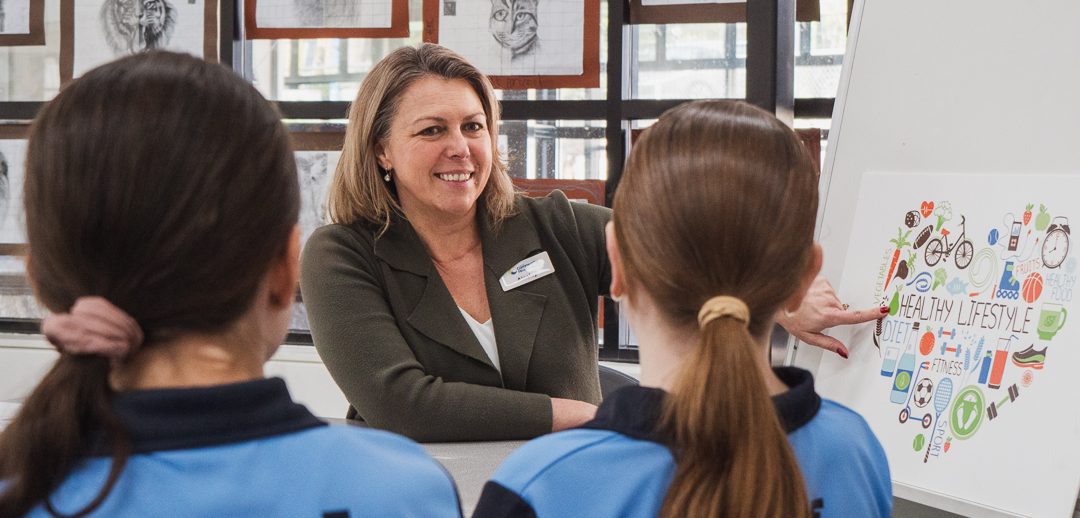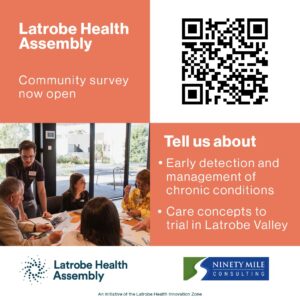The Nurses in Schools program commenced in 2017 because of a local school Principal experiencing a high number of children with absences due to head lice. He approached the Department of Health and Human Services and requested support.
Latrobe Community Health Service (LCHS) was requested to help the school out. From here a nurse in school was identified as being of value. This was not only to look at the identification and treatment of head lice at that time, but has evolved into a program that addresses health disparities in the school community within Latrobe Valley.
In 2018 and 2021 the Latrobe Health Assembly supported the expansion of the Community Health Nurses in School Program (CHNiPS), initially to 4 schools and later to 7 schools. The expansion was based on the level of disadvantage in the schools and the program will fund 7 schools until 31st December 2022. In the second expansion of the program, LCHS was also funded for a Coordinator.
An evaluation of the program delivery to date was finalised in September 2020. The evaluator recommended CHNiPS continue in schools, and at the same time, the program and support infrastructure strengthened so that CHNiPS can reach its full potential in addressing the health needs of children and families living in disadvantaged communities. The 5 recommendations are:
- Funding and investment in the CHNiPS program should continue;
- The gap between CHNiPS program objectives and service delivery should be bridged through a focus on minimum service delivery requirements;
- Nurse outreach data collection and the data collection system should be improved and adapted to measure minimum service delivery requirements;
- There should be greater co-design and collaboration between LCHS and schools in the implementation of the CHNiPS program; and
- Process alignment, while a challenge beyond just CHNiPS, should be discussed by all stakeholders.
Meet Ainsley - Community health nurse (click to read)
Meet Ainsley (pictured above), a community health nurse from Latrobe Community Health Service who works in local primary schools as part of the Latrobe Health Assembly’s Community Health Nurses in Primary Schools program. You might know her from Newborough Primary School or South Street Primary School in Moe.
For Ainsley, every day brings something different. A typical day could include conducting hearing assessments with students, delivering health education sessions, and working with teachers to identify student’s needs – but her role doesn’t stop there. Being placed within primary schools allows Ainsley to work closely with the students and their families to show them what services are available and help them to access it.
“You're an advocate… you’re in healthcare and you know how to navigate the healthcare system, which is really challenging at the best of times.”
“They’ll call out to us out in the playground or wave to us when we're, you know, walking down the corridor. So that's important that the kids are familiar with us being in the schools and they feel comfortable if they need to come and ask us anything.”
Being embedded in the school community allows the nurses to identify barriers for families accessing healthcare and can ensure early intervention and follow-up. Sometimes this can be scheduling hard-to-get appointments with paediatricians, and even driving families to appointments and attending alongside them for extra support.
“Sometimes we can make a phone call and explain the situation to the paediatrician and we can get an earlier appointment. So that has a huge impact on when that child gets seen.”
“If they have any questions during the appointment or after, if it gets a little bit overwhelming, or their child's diagnosed with something that they're not quite sure what it is or what it means – we can be that support person for the parent as well.”
Schools provide a well-rounded support for children and their families which is only strengthened by the addition of a community health nurse. Part of the onsite wellbeing team, they’re readily available to teachers and staff when they might have concerns or questions to ensure no child is overlooked.
“So it might be that they've noticed that the child is coming to school with no food or that they're looking a little bit tired or unkempt, or that they might disclose something to the teacher. And there's follow-up that's needed. So the relationship between the nursing staff and the teachers, it's essential. And we're working together for now. Our focus is the same.”
The impact of the program on Latrobe Valley is outstanding, with a cost-benefit analysis identifying $2.3 million in benefits to the community, but it’s the impression the nurses have on each family that will leave the biggest impact.
“Getting that feedback from the families to say that, you know, they appreciate what we do, that reinforces why we do what we do in the schools. And it's makes it a really rewarding job for that.”
“Sometimes I get tears in the eyes when the kids give you a hug and it's like, yeah, the kids are amazing. They make your day, they really do.”
Would you like to learn more about this project?
Get in touch with the project manager for this project using the contact form below:




